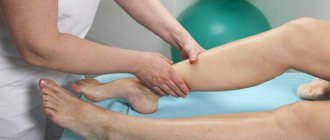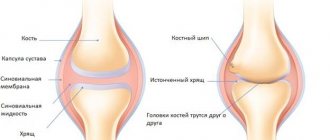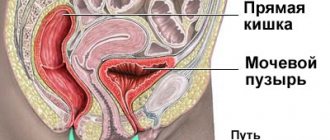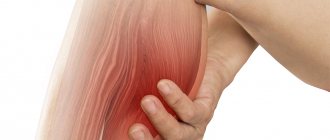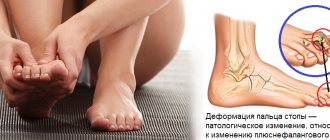Bone pain in cancer patients is usually caused by tumor cells that have invaded the bone, in other words, metastases. Bone pain is often the first sign of bone metastases, which is why it is necessary to verify or reject this assumption.
The treatment of such bone injuries itself is aimed at reducing pain, reducing the risk of fractures, and preventing or slowing down the development of other complications.
Cause
So, a very common cause of bone pain is metastatic cancer. That is, the doctor and the patient are no longer faced with primary, but with secondary oncology. Atypical cells of a primary disease of any organ can damage bone and cause pain.
Moreover, it is the bones that are most susceptible to metastasis of atypical cells into them, which often penetrate there with the bloodstream, attaching to the vascular wall of the network of capillaries located in the bone tissue.
Another way (this happens much less frequently) of penetration of atypical cells into the bone is ingrowth from a tumor localized in the immediate vicinity.
The cause of pain is the disruption of the normal functioning of bone cells by cancer cells. This changes the structure of bone tissue.
When a bone is healthy, it constantly undergoes the process of destruction of old tissue and the formation of new one. Once in the bone, atypical cells disrupt this balance. The attacked periosteum (bone membrane) and nerves react to the invasion, causing pain.
Anatomy of the lower leg
The leg and ankle are a complex mechanical structure, the correct operation of which ensures full motor activity of the whole organism. There are three bones in the ankle joint. Their interaction must be correct, in combination with the functions of connective tissue elements, ligaments, muscles and tendons.
The foot has 20 bones, 30 joints, 100 muscles, ligaments and tendons. Their work must happen correctly and harmoniously. When at least one function of the general mechanism is disrupted, certain pathological processes begin to develop. They are accompanied by pain in the lower legs.
The shin is the part of the lower limb that connects the knee to the heel. The tibia contains the tibia and fibula, to which the kneecap is attached. Near the heel, these two bones merge into the anterior and posterior malleolus. There are muscles throughout all parts of the lower leg. With their help, the foot bends, extends and rotates. In most cases, the appearance of pain in the lower leg is not associated with serious pathologies. However, the help of a doctor is mandatory.
Diagnosis of metastases
As a rule, bone metastases are found in the central region of the skeleton, but, of course, they can damage absolutely any bone.
To detect bone metastases, fluoroscopy or a bone scan is performed. This helps to understand what caused the pain syndrome.
During the scan, the patient is injected intravenously with a special radioactive substance that circulates throughout the body and enters the bones. If the substance is too concentrated in a certain location, this indicates the presence of atypical cells.
Of course, pain can be caused by other pathologies, for example, arthritis. The thing is that if the pain is caused by an oncological process, it has one quality - permanence. Bone pain that lasts a week or two is a good reason to visit a doctor.
What structures can become inflamed in the lower leg?
Pain in the lower leg and ankle occurs suddenly after an injury - bruise, sprain, fracture, dislocation. It can also be caused by a chronic illness. The following structures can become inflamed in the lower leg:
- Ligaments. They may become inflamed or stretched. When a tendon or muscle is sprained, severe tension occurs. Severe trauma also causes muscle or tendon rupture.
- Joints. Arthritis or arthrosis is a common pathological condition that affects the joints and is accompanied by pain. Ankle pain also often accompanies the development of rheumatoid arthritis.
- Tendons. The most common inflammatory tendon pathology is tendonitis. Also, with constant friction of the tendons and a deficiency of interarticular fluid, bursitis develops. This is accompanied by irritation and discomfort.
- Bones. After an injury, the integrity of the bone is often compromised. This is a fracture or crack. In this case, it is very important to visit a doctor as soon as possible. Only through timely and correct treatment will the bone heal and there will be no consequences of the injury.
- Tarsal tunnel syndrome. It develops when the tarsal tunnel is not pinched. This is a nerve located along the entire length of the lower leg.
- Arch. There are tendons in the leg that work synchronously. This is how the arch is formed. When the tendons are connected correctly, a regular and symmetrical arch is formed. If they are connected asymmetrically, an arch of a small size is formed or it is completely absent. With this condition, discomfort or pain occurs.
- Connective tissue. Connective tissue elements are located on the bottom of the foot. When they become inflamed, it is called plantar fasciitis. This happens when wearing incorrectly selected shoes, too narrow and uncomfortable, or with poor posture.
Clinical manifestations
Once it occurs, the pain syndrome provoked by metastases is moderate in nature. It intensifies after physical activity or at night.
As the tumor process develops, the symptoms also intensify. The pain syndrome becomes pronounced and painful.
There are other “signals” indicating the presence of bone metastases:
- Spinal cord compression. It happens quite rarely, but it makes life quite difficult. The thoracic spine or the lumbar and cervical sections are subject to compression.
- Hypercalcemia. The level of calcium in the blood increases, which ultimately leads to a malfunction of many body systems. The complication is very common.
- Pathological fractures. The femur in the area of the diaphysis or neck often suffers.
Patients with late stages of cancer also exhibit symptoms such as:
- Temperature increase;
- Exhaustion;
- Weakness, etc.
Treatment of lower leg pain due to various diseases
Depending on the established diagnosis, doctors draw up a treatment algorithm. Often, pain in the lower leg is caused by increased physical activity and prolonged walking. Therefore, in most cases, after rest, all unpleasant symptoms are eliminated.
To restore the full function of muscles, ligaments, tendons, you will need medication and physiotherapeutic treatment followed by recovery - massages, therapeutic exercises, manual therapy.
To reduce the load on the affected limb, it is necessary to wear special devices. To prevent foot pathologies, doctors prescribe orthopedic shoes or insoles. Doctors can also prescribe anti-inflammatory drugs, muscle relaxants, and chondroprotectors. In severe cases, surgical treatment may be necessary.
Primary tumors
Primary occurrence of bone cancer is rare. Among such diseases are sarcomas. The primary lesion can be caused by active growth of bone tissue, this occurs in people under the age of twenty.
Symptoms of the primary disease:
- Pain in the focal area. At first, the pain syndrome is mild or moderate. He may disappear, but then appears again. At later stages it is constant and pronounced.
- General symptoms that are characteristic of any cancer disease, for example, weight loss, weakness, etc.
- Manifestations characteristic of bone damage - lameness, pathological fractures, etc.
Primary and secondary diseases are united by a number of manifestations, which is why in making a diagnosis you should not rely only on the patient’s complaints. Diagnostics required.
MBST therapy
With the help of magnetic radiation supplied by the MBST device, the following goals can be achieved:
- improve blood circulation and vascular condition;
- get rid of pain;
- prevent further development of the pathological process.
You can sign up for ankle treatment in Moscow at ArthroMedCenter. A completed course of MBST therapy is a good prevention of arthritis, arthrosis, atherosclerosis, and osteoporosis. After the procedure, blood circulation improves and the walls of blood vessels are strengthened. When undergoing MBST therapy, tissues begin to better absorb calcium, and damage and microcracks are restored faster.
Thanks to an integrated approach to treatment and prevention, you can get rid of unpleasant symptoms and prevent further development of diseases.
Painkillers
In almost ninety percent of cases, pain can be significantly reduced with painkillers. But often this is not enough, because as the tumor develops it can become insensitive to them. The question of choosing a drug remains relevant.
There are WHO recommendations regarding the reduction of pain caused by cancer. In these recommendations, the choice of drug should be based on the intensity of the patient's pain. This intensity is graded on a special scale.
- Points 1-3 are given to pain syndrome of mild and moderate severity. Drugs – non-opioids, for example, paracetamol;
- Points 4-6 – moderate pain syndrome. Drugs – opioids (analgesic drugs containing narcotic substances);
- Points 7-10 – the pain syndrome is severe. The drugs are strong opioids. In some cases, drugs that enhance pain relief.
Speaking about painkillers, one cannot fail to note the side effects associated with them, including:
- Feeling drowsy;
- Stool imbalance;
- Dizziness, etc.
And once again about what we noted above: it is better to start using painkillers when the pain syndrome just begins to manifest itself.
Arthrosis and arthritis: what is the difference
Both diseases affect human joints. The quality of life of people who suffer from one of these illnesses is significantly reduced. Although the names of the diseases are similar, their symptoms and manifestations are very different.
Osteoarthritis affects the cartilage of the joint and nearby bones. It is more common in older people. It can be caused not only by age, but also by heavy physical labor or sports activities.
It is difficult to call arthrosis inflammation. But some doctors believe that it is precisely because of the inflammatory process that this disease begins to progress. The cartilage and bone tissues that are located near the joint undergo changes over time. This happens due to the stress that they experience every day. The disease develops slowly.
Arthritis is inflammation that occurs in a joint. It can almost completely destroy cartilage. Unlike arthrosis, this disease is more common among the young population.
The development of the disease and inflammatory process occurs due to autoimmune factors. That is, immunity independently affects the human body. This process can start due to genetic disorders or infectious diseases.
Inflammation is the culprit behind the onset of arthritis. Bacteria that infect the body's cells have antigens similar to its protein. Therefore, he begins to attack his own tissues. Most often, not only joints are affected, but also internal organs. It could be the heart or kidneys. Few people know that in this case, doctors recommend removing tonsils if a person often suffers from sore throats. Otherwise, there is a high risk of complications in the cardiovascular system and other organs.
If we compare arthritis with arthrosis of the foot, the second disease is more acute. Its symptoms are pronounced, so they are difficult to confuse with something else. Arthritis manifests itself in the form of swelling, severe pain, as well as other, not the most pleasant symptoms.
How the disease will develop in the future depends on the type of arthritis. Almost always, after an acute form, the disease “slows down” and then becomes chronic. Some changes in the joints remain forever, so new outbreaks of osteoarthritis are possible. Sometimes relapses occur and the disease again enters an acute form, joint pain and swelling appear, and the temperature rises.
Osteoarthritis, an inflammatory condition, can be controlled with anti-inflammatory medications. But osteoarthritis is much more difficult to treat, since it mostly remains in a chronic form, changing and destroying joints over a long period of time.

